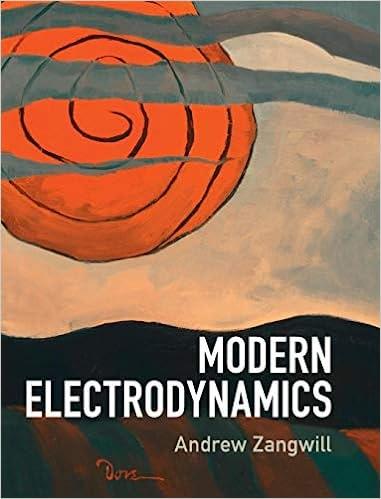An infinite slab of material with index of refraction n() and group velocity g < 0
Question:
An infinite slab of material with index of refraction n(ω) and group velocity νg < 0 occupies the space 0 < z < a. The rest of space is vacuum.
(a) Consider a plane wave with electric field E = x̂E0 exp[iω(z/c − t )] incident on the slab fromz < 0. Use n(ω) to write formulae for the wave in regions 0 < z < a and z > a. Assume n(ω) is not far from unity so reflection from the slab surfaces can be ignored. State the frequency-independent transformation that permits you to derive the z > a field from the 0 < z < a field.
(b) Make the group velocity approximation ωn(ω) ≈ ω0n(ω0) + (c/vg)(ω − ω0) and write formulae for E(z, t ) in all three regions.
(c) Let E(z < 0, t) = ƒ(z/c − t ) = ∞ −∞ dω Ê(z, ω) exp(−iωt ) be a wave packet incident on the slab. Find expressions for E(z, t) for 0 < z < a and z > a using the Fourier components calculated in part (b).
(d) Choose ƒ(x) = E0δ(x) and deduce that the packet exits the slab before it enters.
(e) Let the z < 0 field be E0 exp[−(z/c − t )2/2τ2] exp[iω0(z/c − t )] and write formulae for the electric field in all three regions.
(f) For the Gaussian packet of part (e), let ω0[n(ω0) − 1] = −iϵ, where ϵ = 10−3. Otherwise, choose c = 1, νg = −1/2, a = 50, and τ = 8. Take out the vacuum plane wave as a common factor and plot a sequence of snapshots of E(z, t) in the interval −200 < z < 250. Choose a sufficient number of times in the interval −150 < t < 50 to get a clear idea of how the packet passes through the slab.
(g) Repeat part (f) with νg = +∞ and−4 < t < 50. Explain the physical meaning of infinite group velocity.
Step by Step Answer:






